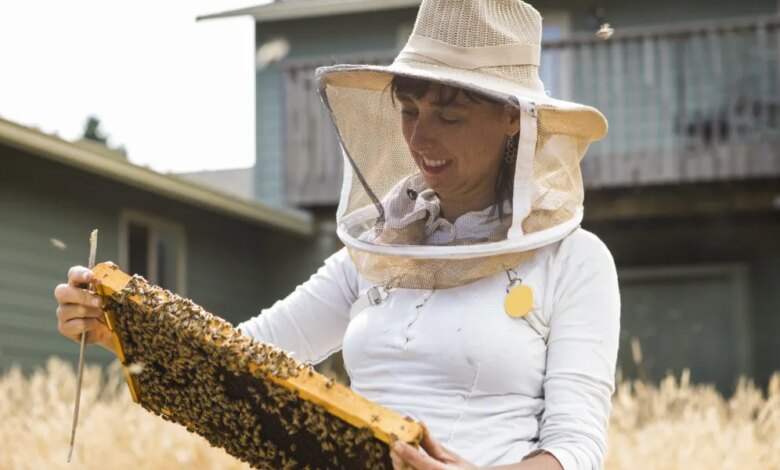The number of bee colonies has reached an all-time high


There’s now a record number of honeybees humming in the U.S–and for many farmers, hobbyist beekeepers, and almond-milk lovers, the news is sweeter than honey.
Nearly a million bee colonies have been formed in the past five years, according to 2022 Census of Agriculture data from the USDA, boosting the total number of colonies to an all-time high of 3.8 million.
The record high has arrived after nearly 20 years of collapsing colonies, where bees died from exposure to poisonous pesticides, stress from cross-country transit to pollinate crops, invasive pests, and changes to habitat. While new colonies have formed, the threat of their collapse is still a very relevant danger.
State legislation that offers tax breaks to beekeepers and the country’s need for pollinators help explain the busier hives, but it’s not all good news: the domesticated, or managed, bees are also a looming threat to other natural pollinators vulnerable to extinction.
It’s in the numbers: Bee colonies are on the rise
Even with record-breaking bee colony numbers, honey production only grew by 11% last year, according to the census.
The difference can be explained by taking a look at the way the census gathers data.
For its report on honey production, the census includes operations with five or more hives. For its report on colony numbers, it includes every “farm” in the country, according to a Washington Post report, defined as any plot of land that sells at least $1,000 worth of agricultural products each year. The department’s definition of farm hasn’t changed since 1975. Inflation, which drives the price of most things up, including honey and hive supplies, has allowed even hobbyist beekeepers to qualify for the census.
Another factor is state legislation that offers tax breaks to beekeepers based on the idea that by caring for and raising bees, they help pollinate surrounding crops and farms. In Texas, the law qualifies people who own between five to 20 acres of land to tax breaks if they rear bees for five years. All 254 of its counties adopted the rules, the Post reported.
With more than 271,000 colonies, Texas now has the third-most colonies in the country, sitting behind California, with about more than 1.3 million colonies, and Florida, which has about 318,900 colonies.
But not all of these beekeepers are producing honey at the scale measured by the census, which could account for the lower reported growth in honey production. Census data shows that the number of bee colony operations rose much faster than honey production–and is up 160% since 2007.
Pollination–not honey–is why the U.S. needs more bees
While nearly all crops in the U.S. depend on honeybees and pollinators to grow, none do so more than almonds, the powerhouse behind the $1.2 billion almond milk industry. When almond blooms blossom around February and March each year, about 2 million bee colonies are shipped in convoys to California, which accounts for about 88% of all managed colonies in the U.S. Almond pollination is responsible for $4 of every $5 spent on bee fertility assistance, according to the Washington Post report.
Almonds are also incredibly resource-intensive. More than a gallon of water is required to grow one single almond and roughly 1,600 gallons of water are needed for one liter of almond milk.
And almond acreages are growing. Demand for the nuts grew 400% since 1980, according to a Bastyr University report, and almond orchards in California grew by 29,000 acres in 2022, according to an estimate from Land IQ, an environmental solutions group.
Most of the world’s crops depend on honeybees and wild bees for pollination, according to a Rutgers University study. In the U.S, crop yields for apples, cherries and blueberries have already been reduced by a lack of pollinators, the study found. The study also shows that adopting practices that conserve wild bees, like raising wildflower gardens and pollinators beyond just honeybees, is likely to improve crop yields.
But more domesticated bees isn’t necessarily a good sign for the wild ones. Domesticated honeybees can compete for resources with wild pollinators, like butterflies, beetles, moths and wild bees—and over 40% of these species already face extinction in the coming decades. About 28% of North American bees are considered threatened species, too.
To be sure, the era of bee colony collapse is still not behind us. Many factors, like climate change, are big threats. The planet’s global warming means the autumn season is longer and hotter, which is exhausting bees while they fly and one reason colonies are still failing across the country.
Source link




